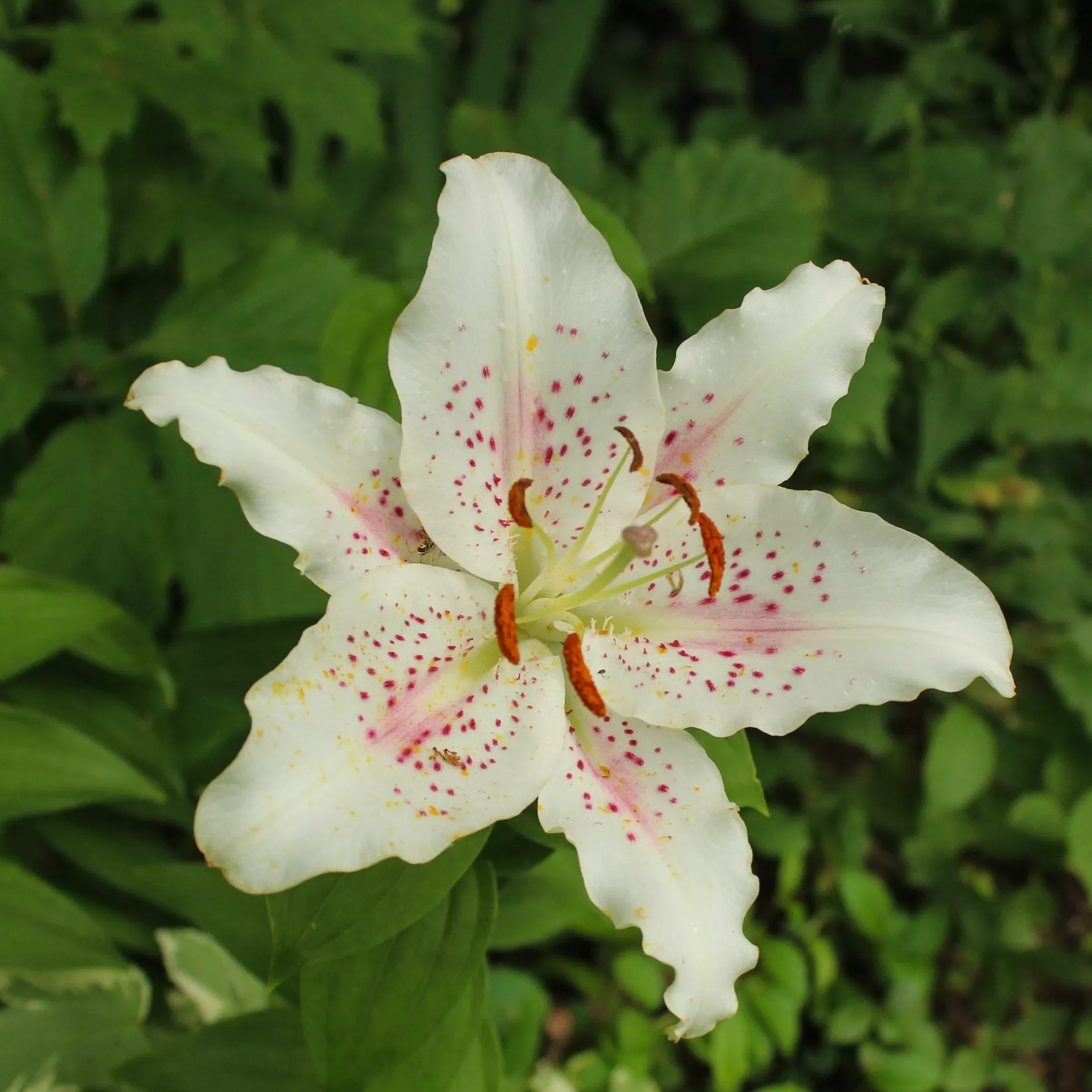Stamp: Flame Lily (Gloriosa superba) (Namibia 1998)
Flame Lily (Gloriosa superba) (Namibia 1998)
13 January (Namibia ) within release Flora and Fauna goes into circulation Stamp Flame Lily (Gloriosa superba) face value 5 Namibian cent
| Stamp Flame Lily (Gloriosa superba) in catalogues | |
|---|---|
| Michel: | Mi: NA 876C |
| Yvert et Tellier: | Yt: NA 820a |
| Stanley Gibbons: | Sg: NA 749a |
Stamp is square format.
Stamp from bookletAlso in the issue Flora and Fauna:
- Stamp - Blue-cheecked Bee-eater (Merops persicus) face value 40;
- Stamp - Bushman Poison (Adenium bochnianum) face value 10;
- Stamp - Camel's Foot (Bauhinia petersiana) face value 20;
- Stamp - Flame Lily (Gloriosa superba) face value 5;
- Stamp - Lappet-faced Vulture (Aegypius tracheliotus) face value 60;
- Stamp - Laughing Dove (Streptopelia senegalensis) face value 50;
- Stamp - Leopard (Panthera pardus) face value Postcard;
- Stamp - Rosy-faced Lovebird (Agapornis roseicollis) face value Standard;
- Stamp - Southern Yellow-billed Hornbill (Tockus flavirostris) face value 90;
- Stamp - Western Rhigozum (Rhigozum brevispinosum) face value 30;
Stamp Flame Lily (Gloriosa superba) it reflects the thematic directions:
A flower, sometimes known as a bloom or blossom, is the reproductive structure found in plants that are floral (plants of the division Magnoliophyta, also called angiosperms). The biological function of a flower is to effect reproduction, usually by providing a mechanism for the union of sperm with eggs. Flowers may facilitate outcrossing (fusion of sperm and eggs from different individuals in a population) or allow selfing (fusion of sperm and egg from the same flower). Some flowers produce diaspores without fertilization (parthenocarpy). Flowers contain sporangia and are the site where gametophytes develop. Many flowers have evolved to be attractive to animals, so as to cause them to be vectors for the transfer of pollen. After fertilization, the ovary of the flower develops into fruit containing seeds. In addition to facilitating the reproduction of flowering plants, flowers have long been admired and used by humans to beautify their environment, and also as objects of romance, ritual, religion, medicine and as a source of food.
Lilium (/ˈlɪliəm/ LIL-ee-əm) is a genus of herbaceous flowering plants growing from bulbs, all with large and often prominent flowers. Lilies are a group of flowering plants which are important in culture and literature in much of the world. Most species are native to the Northern Hemisphere and their range is temperate climates and extends into the subtropics. Many other plants have "lily" in their common names, but do not belong to the same genus and are therefore not true lilies. True lilies are known to be highly toxic to cats
Flora is the plant life occurring in a particular region or time, generally the naturally occurring or indigenous—native plant life. The corresponding term for animal life is fauna. Flora, fauna and other forms of life such as fungi are collectively referred to as biota. Sometimes bacteria and fungi are also referred to as flora, as in the terms gut flora or skin flora.



